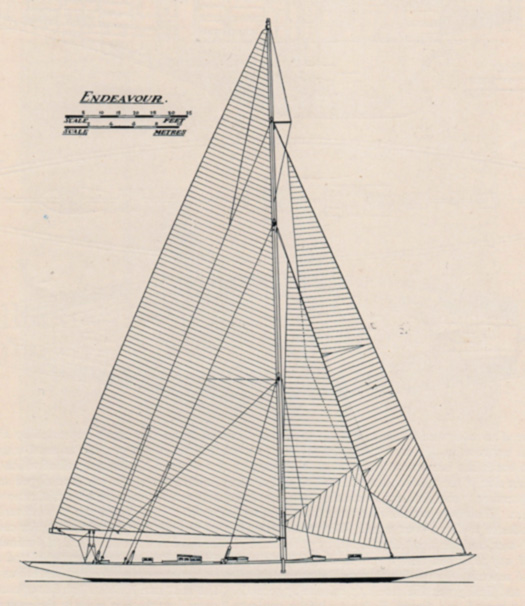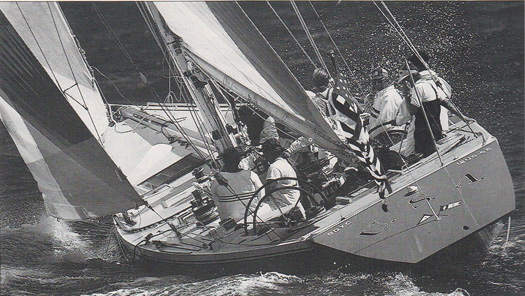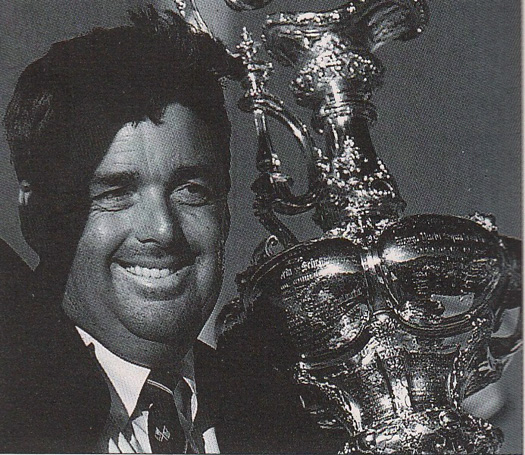Displaying items by tag: San Francisco
$1 Million Top Prize at SailGP San Francisco
It's full speed ahead for SailGP's eight-nation fleet as they head into Season 2's home stretch. Vying for the highly coveted $1 million top prize, the Mubadala United States Sail Grand Prix will play host to the championship league's Grand Final on March 26-27, 2022 in San Francisco.
Known for its cable cars and hilly streets lined with Victorian houses, the Bay area will be pumping with adrenaline as the eight identical high-flying F50s battle it out for ultimate supremacy against the backdrop of the iconic Golden Gate Bridge.
As the final event of Season 2, defending champions, Australian SailGP Team, look to clinch their second consecutive title, or will a new winner will be crowned?
The 34th America's Cup: Sailing's Sacred Monster Roars Again
#americascup – Today, the monster in its fully finished form finally emerges from its cave. For sure, we have a pretty good idea of what it will look like. Yet the convoluted preliminaries for 34th America's Cup have gone on for so long now that anyone who reckons they know what has been happening is probably deluded. And as for what it's really going to be like off San Francisco today, it's anyone's guess – curtain up on any show is a world away from dress rehearsal.
There's one heck of a difference between tests and trials, and defender and challenger selections. All we know is that two 72ft catamarans will be pushed to the limit, and the rest of the world will briefly pay attention to our sport of sailing, mainly in the hope of seeing a spectacular and very expensive crash before dinner.
But for sailing enthusiasts, mixed feelings only begins to describe it. Horrified and slightly guilty fascination is probably the most general reaction. Not to worry, folks. It has always been that way. The America's Cup is indeed sailing's sacred monster. But it's undoubtedly our monster. And it's just about the only way the general public connect with sailing. So we have to live with it with the best grace we can manage, for it's completely pointless trying to assert that it has nothing whatever to do with us.
It's grand guignol goes afloat. And it's the apogee of the times in which we live, for it's now way beyond the international. It's beyond the supra-national. It's globalisation par excellence. It may in theory be New Zealand challenging America. But the multiple-nationality mixes in the crews have made traditional concepts of sailing for your own country irrelevant. So it's completely appropriate that it's taking place in sailing waters off the world capital of electronic technological development in the American state which is home to the world headquarters of the entertainment industry.
If this all seems way over the top, worry not - be of good cheer. For just about every staging of the America's Cup has provided some of the most over-the-top events of its era. Larger than life characters. Spectacular and often dangerous maritime technology. And expenditure that does nothing whatever to reduce the popular perception that sailing is basically a rich man's sport.
All that together with all the jolly interaction of minutely detailed rule interpretation, legal rows and international incidents. The miracle is that so far nobody seems to have gone to war, but it's early days yet. Certainly back in the 1890s the disputes that our own Lord Dunraven got into with the New York Yacht Club weren't that far from the "send a gunboat" reaction which played a key role in international diplomacy at the time.

The schooner America shortly after her launching in New York in 1851. A swift and seamanlike vessel, she was able to sail across the Atlantic before winning the new Queen's Cup – subsequently the America's Cup - at Cowes that same year. A whole world away from today's hazard-laden 72ft catamarans, America survived a colourful life until 1945, when she was finally destroyed in a snowstorm in Annapolis .
Faced with all this, those of us who prefer the quiet life seek solace in contemplating the boats and the sailing, even if the last time the America's Cup was in a form to which ordinary sailing folk can relate was when it was staged off Perth in Western Australia in 1987. The racing was in 12 Metres with great sailing. This was thanks to the afternoon breeze wrongly known as the Fremantle doctor. It's actually the docker, from the days when it regularly brought becalmed sailing ships into port each afternoon. But it has been gentrified with suggestions of health benefits, as was Fremantle itself thanks to the America's Cup.
Whatever, it was a real racing series, using boats with which the world of sailing could identify. But after Dennis Conner won and took the trophy back to America, the short but happy period with 12 Metres came to an end, and since then we've had to get used to a new scenario each time round, sometimes with boat which are very odd indeed.
But then that's always been the case when we look at the America's Cup in its entirety. Recently, in talking here about Harry Donegan of Cork and his cutter Gull which he raced in the first Fastnet of 1925, we talked of Gull as having been designed by the young Charles E Nicholson, who went on to design some formidable racing craft, America's Cup boats among them.
In fact, it was Nicholson's first America's Cup challenge design, Shamrock IV of 1914 for Thomas Lipton, which was perhaps his most remarkable of all. The previous series of 1903 had seen things get out of hand entirely, with the Americans successfully defending with the 143ft Herreshoff-designed Reliance. She was lightly built out of such a toxic mixture of metals that it's said she hissed when put afloat, and after keeping the cup with three straight and convincing wins, she had to be dismantled as her seaworthiness could no longer be guaranteed.

Charles E Nicholson's hull design for the 110ft Shamrock IV in 1914 was very advanced for its time

Shamrock IV's rig was much more primitive than her hull design
The new rule for the proposed 1914 series saw boat sizes reduced, but for his first attempt Nicholson went high tech, producing a skimming dish 110ft long. Unfortunately for the challenge, the Great War broke out as this extraordinary boat was sailing across the Atlantic - challengers had to do this in the early days of the Amrica's Cup, as America herself had sailed to England in 1851. But when Shamrock reached New York, the series was postponed for the duration of the war, and when it finally took place in 1920, even though the Americans had had six years to create a faster boat, Shamrock IV came within one race of winning.

The hull lines of the J-Class Endeavour of 1934 were much less advanced in concept than the hull lines of Shamrock IV twenty years earlier.

With the bow overhang longer than the stern, the J Class Endeavour is a rather odd-looking boat
Subsequently, Bermudan rig took over with the introduction of the J Class in 1930, but although the rigs were more modern, it could be argued that the J Class marked a distinctly retrograde step from Shamrock IV in hull design. I know they're continuing to build J Class yachts these days, but for the life of me I can't find them attractive. The sterns look all wrong, or maybe the bow overhang protrudes too much Whatever the reason, the J Class rule produces sterns which seem to rise too quickly, while the bow overhang is excessive to give a sort of back-to-front profile.
Thus a comparison between the hull lines of Shamrock IV and Endeavour – supposedly the most beautiful J Class of them all – shows a sweet hull in the case of Shamrock, yet with Endeavour you've a hull which is going to pull half the ocean behind her.

The great racing off Perth in 1987, when Dennis Conner's Stars & Stripes (pictured) wrested the cup back from the Australians. This was the last occasion in which the America's Cup was sailed in boats which bore some resemblance to normal yachts.

The Dennis Does It. Dennis Conner with the America's Cup after winning it back from the Australians in 1987.
It's all a long way from today's catamarans which aren't really described as boats at all – they're platforms underneath wings. And any disturbance of the water is minimal. So it could be argued that the only connection with the America's Cup in times past is that they're being sailed by people, but even there we have difficulty in discerning their humanity, as they're kitted out like bikers in the TT on the Isle of Man.
But somewhere in it all, there are real people. There isn't much Irish involvement this time round. But with names like William Henn and Lord Dunraven and Willie Jameson and Thomas Lipton and Harold Cudmore resonating down the years in America's Cup history, we cannot deny that slightly horrified fascination as the 34th series gets under way today in San Francisco.
Not least of the fascination lies in seeing what happens afterwards. We aren't talking about everyday ordinary folk here. The kind of hyper-successful people who get to make America's Cup challenges and defences genuinely do believe that when something goes wrong, then it undoubtedly is somebody else's fault. Their code is summed in this spin on an old piece of verse:
And when that one great scorer comes,
To write against your name,
He writes not that you won or lost,
But how you spread the blame.
America's Cup Could Cost San Francisco's Taxpayers
#AmericasCup - The America's Cup could cost the city of San Francisco up to $20 million, according to Phillip Matier and Andrew Ross in the San Francisco Chronicle.
The columnists reckon that fundraising efforts to raise the close to $34 million needed to cover the event's expenses "have pretty much hit the wall at $14 million" - leaving an already cash-strapped city to potentially pick up the shortfall.
San Francisco's fundraising issues have echoes of Galway's hosting of the Volvo Ocean Race last year - an event that was a rousing success itself, but one that left race organisers in debt by nearly half a million euro.
Afloat.ie's own WM Nixon wrote at the weekend that "it's time for a reality check" for San Francisco with some notes to go before the first yachts race in the bay.
While he believes that the event will be a sell-out, "it's not a question of whether or not the tickets sell out. Rather, it's a matte roof how quickly, and to whom, and for how much."
Irish Residents Among Rescued as Party Boat Hits Rocks in San Francisco
#RESCUE - An unconfirmed number of men from Ireland were among 22 people rescued from a sinking passenger boat in San Francisco Bay in the early hours of this morning.
KGO-TV News reports that the hull of The Neptune was punctured by a rock off Alcatraz around 9.15pm last night local time (5.15am this morning Irish time) and quickly began taking on water.
Matthew Rice was celebrating his bachelor party on the boat with 17 friends at the time - a number of whom has travelled from as far as Ireland - when "all of a sudden it was like boom, just the a big jolt and the next thing we knew the [US] Coast Guard boat came in and got us off," he recalls.
Crew member Rachel Smith, one of four crew on board the party boat, explained how the vessel had veered slightly off course due to a navigation error and hit an area known as 'Little Alcatraz', which resulted in two square-foot holes on either side of the rear hull.
All on board were taken to safety by the coastguard, and attempts were being made to bail the water out of the boat to allow its towing back to San Francisco overnight.
Survivor of San Francisco Yachting Tragedy Speaks Out
#FARALLONS TRAGEDY - A survivor of the tragedy described as San Francisco's worst ever sailing accident has written about his experiences, as the San Francisco Examiner reports.
Bryan Chong was one of three crewmembers, along with Nic Voss and skipper James Bradford, who were rescued from the rocks by the US Coast Guard after their 38-foot yacht Low Speed Chase ran aground at the Farallon Islands, some 25 miles off the coast of San Francisco in northern California.
As previously reported on Afloat.ie, Alan Cahill and Elmer Morrissey were among five declared dead after a marathon 30-hour search operation proved fruitless. The body of Marc Kasanin was the only lost sailor recovered.
In a full account to sailing website Latitude 38, Chong described seeing "the biggest swell" breaking over the boat as they rounded the islands during the traditional Full Crew Farallones Race, in which they were competing with 40 other yachts.
When the vessel resurfaced, the mast was snapped and only Chong and Voss were left on board. As they tried to help fellow crewmembers out of the water, a second wave hit that grounded the yacht on the rocks and threw Chong overboard.
“I couldn’t tell if I was in the water for a minute or an hour, but according to Nick it was about 15 minutes,” wrote Chong. “Those 15 minutes in the water were the absolute scariest in my life.”
He also hoped the tragedy would help improve on-deck safety, as the crew of the Low Speed Chase had not been using the boat's teathers at the time of the incident.
The San Francisco Examiner has more on the story HERE.
#AMERICAS CUP - Moët & Chandon has signed on as an official sponsor of the 34th America's Cup.
The luxury drinks last week announced its parnership as the official champagne of the prestigious race, reinforcing its long-standing history of supporting sportsmanship, and sailing in particular.
Moët & Chandon will be following the world's fastest boats from the World Series to the Louis Vuitton Cup (4 July-1 September 2013) and the America's Cup Match in San Francisco from 7-22 September 2013.
As previously reported on Afloat.ie, the 34th America's Cup will effectively take place in a nautical stadium along the San Francisco waterfront, with spectators being able to follow the whole race from the shore.
Skippers from all nine teams competing in the America's Cup World Series were invited at the official announcement to sign a Golden Jerboam of Moët & Chandon. It will be auctioned with proceeds going to the Healthy Ocean Project, the global initiatives of the 34th America’s Cup to educate the world’s populations about the issues facing our oceans and inspire them to act.
Among those sailors stepping up to the America's Cup challenge is Cork native Revelin Minihane, who has joined ORACLE Racing's team for its World Series campaign.
As a junior, Revelin Minihane was a Mirror world champion crewing for Marty Moloney in 1999, and is yet another example of some of our top juniors making it on to the world stage.
Minihane's pedigree in a safety role - which has taken on added importance with the new wingsail catamarans - is also undoubted, with his experience volunteering with the Baltimore RNLI lifeboat.
Tweet, tweet! In case you missed them, here's a recap of the weekend's Irish sailing and boating top stories; An Irish superyacht steals the Show in France, Privateer does the same in Kinsale and there's a blustery start in Howth, NUI Galway enter the Round Ireland race, more humpback whales appear (we have the vid), an American sailor is looking for lost love in Ireland, the first cruise ship will arrive in Dun Laoghaire next week (and there's a new Dun Laoghaire dock installed to meet it) Young Finn Lynch from Blessington takes his place on the Irish Youth worlds team named here, there's a dramatic rescue on Fair head and tragically the search for two missing Irish sailors ends in San Francisco. Keep up to date via our twitter stream here
Search Ends for Missing Sailors in San Francisco Yacht Tragedy
#MISSING SAILORS - The US Coast Guard last night suspended its search for four yacht crew members - including two Irish sailors - who went missing after what's being described as San Francisco's worst ever sailing accident, Fox News reports.
Petty Officer Caleb Critchfield told the Associated Press: "There's a window of survivability and we searched well beyond that window."
Boats and aircraft had combed over 5,000 square miles of ocean in a marathon 30-hour operation before the search was halted at sunset last night. It is not expected to resume.
As previously reported on Afloat.ie, the missing include Irish yachtsmen Alan Cahill, originally from Blarney in Co Cork, and his friend Elmer Morrissey, who had moved to the US for work only last year, according to friends and colleagues on Facebook.
The two men, along with fellow crew Jordan Fromm, Alexis Busch and Marc Kasanin, were thrown into the frigid water after their 38-foot yacht Low Speed Chase ran aground at the Farallon Islands, some 25 miles off the coast of San Francisco in northern California.
Three other crewmembers, including the boat's owner and skipper James Bradford, were rescued from the rocks shortly after the incident. The body of Kasanin, 45, was recovered from the water hours later.
The boat had been competing in the Full Crew Farallones Race with 40 other yachts between San Francisco and the islands when the tragedy occurred.
Known for its rough conditions with 14-foot swells and winds of up to 20 knots, the near-century old tradition has "never been for the faint of heart".
#MISSING SAILORS – A second Irish sailor is reported among the crew missing from a yacht capsized onto rocks in San Francisco's worst sailing accident in recent times on Saturday.
The acccient has left one dead and four missing.
Cork professional sailor Alan Cahill who was based in the United States for over 15 years but who learned to sail at Royal CorkYacht Club has been named by the San Franciso Yacht Club as one of the missing crew here.
"It's a tragedy of unbelievable proportions," said yacht club director Ed Lynch. "It doesn't affect just this club, it affects sailors all over the world. It's going to hit us hard for a long, long time. "We're all deeply saddened."
Local media are reporting this morning that another Irish sailor Elmer Morrissey is the fourth missing crew man but organisers, the San Francisco Yacht Club, say the final missing crewman's name will not be revealed until his family have been informed.
The Irish Independent reports that Morrissey is from Cork and was on board the 38-ft Low Speed Chase was competing in the race from San Francisco Bay around the Farallon Islands, some 27 miles off the US west coast.
RTE News is reporting that Alan Cahill is a married father of two young children, is originally from Cork, but lived in Tiburon, San Francisco. Cahil's friend Elmer Morrissey was on his second day visiting from Ireland.
A Mayday call reporting the accident went out at about 3 p.m on Saturday.
Forty-nine boats competed in this year's race, which started Saturday, taking the fleet out the Golden Gate Bridge and around the Southeast Farallones Island.
Irish Sailor Missing After San Francisco Yacht Hits Rocks
#SAN FRANCISCO MISSING SAILORS – An Irish sailor is reported missing from a yacht in San Francison after a serious accident during a yacht race at the weekend.
One crew man died, three others are missing and three survived after 12-foot waves hit James Bradford's Sydney 38 Low Speed Chase, which was competing in the Full Crew Farallones Race, organised by San Francisco Yacht Club.
The crew of the yacht has been named but the name of one additional crew member, reported locally as the missing Irish sailor, has not been released. Authorities are still making efforts to reach his family. A statement has been issued by San Francisco Yacht Club here.
Coast Guard and National Guard rescuers are continuing to search the sea 27 miles west of the Golden Gate bridge for the missing sailors.
Three other sailors were rescued from the rocks on Saturday afternoon after the boat crashed onto Southeast Farallon Island at around 3pm.
Forty-nine boats competed in this year's race, which started Saturday, taking the fleet out the Golden Gate Bridge and around the Southeast Farallones Island.
The finish was at the yacht club race deck, with a calculated race distance of 58 nautical miles
Local reports say several boats turned back when 25-knot winds and high waves churned up the waters near the Farallones, but otherwise the race conditions were typical for that area and this time of year, said San Francisco Yacht Club director Ed Lynch.
More on this story from the San Franciso Chronicle here.
US Coastguard footage of the resuce here




































































